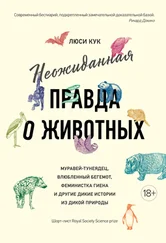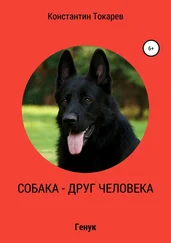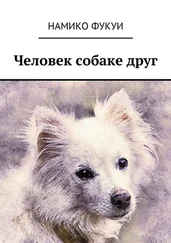C. G. Gross, C. E. Rocha-Miranda, and D. B. Bender, “Visual Properties of Neurons in Inferotemporal Cortex of the Macaque,” Journal of Neurophysiology 35 (1972): 96–111; R. Desimone, T. D. Albright, C. G. Gross, and C. Bruce, “Stimulus-Selective Properties of Inferior Temporal Neurons in the Macaque,” Journal of Neuroscience 4 (1984): 2051–2062; D. Y. Tsao, S. Moeller, and W. A. Freiwald, “Comparing Face Patch Systems in Macaques and Humans,” Proceedings of the National Academy of Sciences of the United States of America 105 (2008): 19514–19519.
D. D. Dilks, P. A. Cook, S. K. Weiller, H. P. Berns, M. Spivak, and G. S. Berns, “Awake fMRI Reveals a Specialized Region in Dog Temporal Cortex for Face Processing,” PeerJ 3 (2015): e1115.
L. V. Cuaya, R. Hernández-Pérez, and L. Concha, “Our Faces in the Dog’s Brain: Functional Imaging Reveals Temporal Cortex Activation During Perception of Human Faces,” PLoS ONE 11, no. 3 (2016): e0149431.
K. M. Kendrick and B. A. Baldwin, “Cells in Temporal Cortex of Conscious Sheep Can Respond Preferentially to the Sight of Faces,” Science 236 (1987): 448–450.
C. Nawroth, J. M. Brett, and A. G. McElligott, “Goats Display Audience-Dependent Human-Directed Gazing Behaviour in a Problem-Solving Task,” Biology Letters 12 (2016): 20160283.
J. M. Marzluff, R. Miyaoka, S. Minoshima, and D. J. Cross, “Brain Imaging Reveals Neuronal Circuitry Underlying the Crow’s Perception of Human Faces,” Proceedings of the National Academy of Sciences of the United States of America 109 (2012): 15912–15917.
M. Coulon, B. L. Deputte, Y. Heyman, and C. Baudoin, “Individual Recognition in Domestic Cattle (Bos Taurus): Evidence from 2D Images of Heads from Different Breeds,” PLoS ONE 4 (2009): e4441.
J. M. Plotnick, F. B. M. de Waal, and D. Reiss, “Self-Recognition in an Asian Elephant,” Proceedings of the National Academy of Sciences of the United States of America 103 (2006): 17053–17057.
S. G. Lomber and P. Cornwell, “Dogs, but Not Cats, Can Readily Recognize the Face of Their Handler,” Journal of Vision 5 (2005): 49.
T. Raettig and S. A. Kotz, “Auditory Processing of Different Types of Pseudo-Words: An Event-Related fMRI Study,” NeuroImage 39 (2008): 1420–1428.
C. Fellbaum, “Wordnet and Wordnets,” in Encyclopedia of Language and Linguistics, edited by K. Brown, 665–670 (Oxford: Elsevier, 2005).
S. Waxman, X. Fu, S. Arunachalam, E. Leddon, K. Geraghty, and H. Song, “Are Nouns Learned Before Verbs?” Child Development Perspectives 7 (2013): 155–159.
Реконструкция событий по исследованию Роберта Пэддла. См. R. Paddle, The Last Tasmanian Tiger: The History and Extinction of the Thylacine (Cambridge: Cambridge University Press, 2000).
“Beauty and the Beast at the Hobart Zoo: Girl Whose Greatest Chum Is a Full-Grown Leopard,” Register News-Pictorial, May 17, 1930, http://trove.nla.gov.au/newspaper/article/54241041.
S. R. Sleightholme, “Confirmation of the Gender of the Last Captive Thylacine,” Australian Zoologist 35 (2011): 953–956.
“Tasmanian Tiger/Thylacine Combined Footage,” YouTube, posted May 3, 2007, https://www.youtube.com/watch?v=odswge5onwY.
D. Quammen, The Song of the Dodo: Island Biogeography in an Age of Extinctions (New York: Scribner, 1996).
E. Guiler and P. Godard, Tasmanian Tiger: A Lesson to Be Learnt (Perth, Australia: Abrolhos, 1998).
C. Wemmer, “Opportunities Lost: Zoos and the Marsupial That Tried to Be a Wolf,” Zoo Biology 21 (2002): 1–4.
Там же.
C. R. Campbell, “The Thylacine Museum,” www.naturalworlds.org/thylacine/index.htm, retrieved April 19, 2016.
E. R. Guiler, Thylacine: The Tragedy of the Tasmanian Tiger (Melbourne: Oxford University Press, 1985), 14.
Там же, 16.
Там же, 138.
Там же, 140.
E. R. Guiler and G. K. Meldrum, “Suspected Sheep Killing by the Thylacine Thylacinus cynocephalus (Harris),” Australian Journal of Science 20 (1958): 214, reprinted in Guiler, Thylacine, 141.
K. W. S. Ashwell, ed., The Neurobiology of Australian Marsupials (Cambridge: Cambridge University Press, 2010).
C. Bailey, Lure of the Thylacine: True Stories and Legendary Tales of the Tasmanian Tiger (Victoria, Australia: Echo Publishing, 2016).
US Department of Agriculture, “Sheep and Lamb Predator and Nonpredator Death Loss in the United States,” 2015, USDA-APHIS-VS-CEAH-NAHMS.
B. Figueirido and C. M. Janis, “The Predatory Behaviour of the Thylacine: Tasmanian Tiger or Marsupial Wolf?” Biology Letters (2011): 937–940.
M. E. Jones and D. M. Stoddart. “Reconstruction of the Predatory Behaviour of the Extinct Marsupial Thylacine (Thylacinus cynocephalus),” Journal of Zoology 246 (1998): 239–246.
W. Miller, D. I. Drautz, J. E. Janecka, A. M. Lesk, A. Ratan, L. P. Tomsho, M. Packard, et al., “The Mitochondrial Genome Sequence of the Tasmanian Tiger (Thylacinus cynocephalus),” Genome Research 19 (2009): 213–220.
E. P. Murchison, C. Tovar, A. Hsu, H. S. Bender, P. Kheradpour, C. A. Rebbeck, D. Obendorf, et al., “The Tasmanian Devil Transcriptome Reveals Schwann Cell Origins of a Clonally Transmissible Cancer,” Science 327 (2010): 84–87.
C. Murgia, J. K. Pritchard, S. Y. Kim, A. Fassati, and R. A. Weiss, “Clonal Origin and Evolution of a Transmissible Cancer,” Cell 126 (2006): 477–487.
Save the Tasmanian Devil, www.tassiedevil.com.au/tasdevil.nsf, retrieved May 17, 2016.
T. D. Beeland, The Secret World of Red Wolves: The Fight to Save North America’s Other Wolf (Chapel Hill: University of North Carolina Press, 2013).
Кроме того, Смитсоновский институт одолжил нам образец мозга тасманийского дьявола той же давности, что и мозг тилацина, однако он тоже оказался усохшим.
A. A. Abbie, “The Excitable Cortex in Perameles, Sarcophilus, Dasyurus, Trichosurus and Wallabia (Macropus),” Journal of Comparative Neurology 72 (1940): 469–487; L. Krubitzer, “The Magnificent Compromise: Cortical Field Evolution in Mammals,” Neuron 56 (2007).
G. S. Berns and K. W. S. Ashwell, “Reconstruction of the Cortical Maps of the Tasmanian Tiger and Comparison to the Tasmanian Devil,” PLoS ONE 12 (2017): e0168993.
S. Wroe, C. McHenry, and J. Thomason, “Bite Club: Comparative Bite Force in Big Biting Mammals and the Prediction of Predatory Behaviour in Fossil Taxa,” Proceedings of the Royal Society of London B 272 (2005): 619–625.
Читать дальше
Конец ознакомительного отрывка
Купить книгу
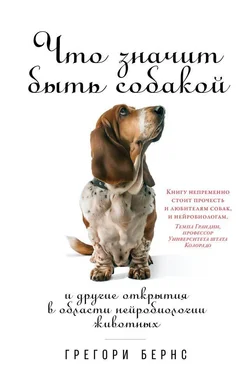





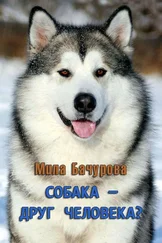
![Рона Цоллерн - Старший мальчик и другие рассказы из книги «Obscura reperta [Тёмные открытия]»](/books/442640/rona-collern-starshij-malchik-i-drugie-rasskazy-iz-thumb.webp)

